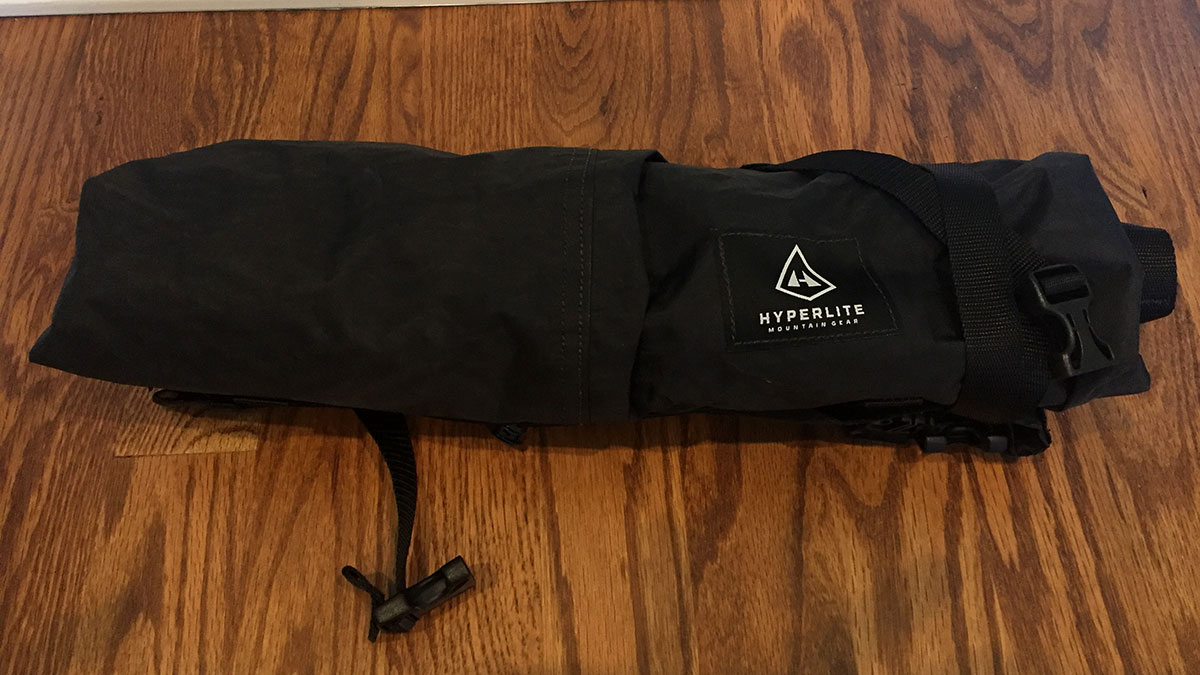The perfect summit pack is much like the perfect one-liner: until it’s needed, one is hardly aware of its presence. In the case of the clever bon mot, you might have a turn of phrase lurking in the back of your mind for years that you finally deliver just when the dinner party needs a lift; with the summit pack, it’s more of a backpack that you keep folded away in your larger pack until it’s time to leave camp for an ascent or to leave home for a day hike. So… perhaps there aren’t that many similarities. Regardless, I can tell you this: the Hyperlite Mountain Gear Summit pack is so lightweight and folds down to be so compact that you will probably forget you have it stowed away until it’s time to head out for that final push. But when you unfurl, load up, and put on this pack, you’ll be thrilled you brought it along.
First let’s talk cold, hard data. The Hyperlite Summit Pack — which is available in white or black — weighs in at just 14.2 ounces. For those of you who don’t work for the Bureau of Weights and Measures, that’s less than one pound. Yet it has a 30-liter capacity. For those of you not overly-familiar with hiking packs, that’s a lot of space. Like most items in the Hyperlite Mountain Gear lineup, this pack is made from Dyneema Composite Fabric (that’s 150 Denier Poly/Dyneema Composite Fabric Hybrid material, to be precise) that is tear- and puncture-resistant, waterproof, and incredibly durable. No wonder they also use it to make larger packs, tents and shelters, and more.
The Hyperlite Summit Pack uses the rather common roll-top closure approach, which allows you to adjust the size of the storage compartment — good for preventing gear from shifting about as you hike, climb, ski, or dance — and which doubles as a handle when the pack is off your back. Its shoulder straps are comfortable and easy to adjust, and it features a chest and belly band, both of which help distribute the load. The bag also has an elastic shock cord and daisy chain style webbing for external attachment of additional gear.

But here’s what really counts in the summit pack (and, to a lesser extent, day pack) category: the Hyperlite Summit Pack can be rolled up into a tube not much larger than rolled magazine. (Maybe Vanity Fair, not Time, but still.) As an example of the loaded size vs. packed away size, I filled my Hyperlite with a sleeping bag and three air mats. Granted, that is about the most illogical gear one could possibly put into a summit pack in the field, but the point was to fill it with bulky items, not to strategically plan for a summit push departing from my office.

Another thing I should mention before I offer a few modest critiques is that Hyperlite Mountain Gear is made in the United States. It’s made in Maine by a small group of hardworking folks who are genuine outdoorsmen (outdoors people, to be fair) who have both a passion for and an understanding of wilderness gear. The packs (and other items) they offer are stripped down to the bare essentials not because it sounds cool or might help sales, but because when you’re far afield, what you need is lightweight, functional gear, not bells and whistles.
Now, a few drawbacks must be noted. An internal pocket designed to hold a water bladder and a pass-through slot for its drinking tube would be a welcome addition indeed, and the absence thereof, along with the absence of side pouches for water bottles, is something of an issue. It means you have to carry your water in your pack and in a bottle (you could toss a bladder in there, but it would be under a lot of pressure and at risk of leakage), which takes up space. Yes, said pocket or pouches would add a bit of weight, but it would be an acceptable ounce or two, if you ask this old mountain feller. Second, the waist strap is thin and cuts into the belly some if the pack is heavily laden; you can’t pull it nearly as tight as would be possible with a wider belt and larger buckles. Again, yes, more weight, but I’d gladly deal with that ounce or so, too. Third, there is no third. Damn good pack overall, and my new go-to summit pack.




